Christmas (pronounced /ˈkrɪsməs/) or Christmas Day is an annual holiday celebrated on December 25 that commemorates the birth of Jesus of Nazareth.[2][3] The day marks the beginning of the larger season of Christmastide, which lasts twelve days.[4] It is unlikely that December 25 is Jesus' actual birthday, as this date of celebration may have been chosen solely to correspond with either a historical Roman festival[5] or the winter solstice.[6]
Modern customs of the holiday include gift-giving, Church celebrations, exchange of Christmas cards, and the display of various decorations—including the Christmas tree, lights, mistletoe, nativity scenes, and holly. Santa Claus (also referred to as Father Christmas, although the two figures have different origins) is a popular mythological figure often associated with bringing gifts at Christmas for children. Santa is generally believed to be the result of a syncretization between Saint Nicholas and elements from pagan Nordic and Christian mythology, and his modern appearance is believed to have originated in 19th century media.
Christmas is celebrated throughout the Christian population, but is also celebrated by many non-Christians as a secular, cultural festival. Because gift-giving and several other aspects of the holiday involve heightened economic activity among both Christians and non-Christians, Christmas has become a major event for many retailers.
Etymology
The word Christmas originated as a compound meaning "Christ's Mass". It is derived from the Middle English Christemasse and Old English Cristes mæsse, a phrase first recorded in 1038.[3] "Cristes" is from Greek Christos and "mæsse" is from Latin missa. In Greek, the letter Χ (chi), is the first letter of Christ, and it, or the similar Roman letter X, has been used as an abbreviation for Christ since the mid-16th century.[7] Hence, Xmas is often used as an abbreviation for Christmas.
History
For many centuries, Christian writers accepted that Christmas was the actual date on which Jesus was born.[8] However, in the early eighteenth century, scholars began proposing alternative explanations. Isaac Newton argued that the date of Christmas was selected to correspond with the winter solstice,[6] which in ancient times was marked on December 25.[9] In 1743, German Protestant Paul Ernst Jablonski argued Christmas was placed on December 25 to correspond with the Roman solar holiday Dies Natalis Solis Invicti and was therefore a "paganization" that debased the true church.[5] In 1889, Louis Duchesne suggested that the date of Christmas was calculated as nine months after the Annunciation (March 25), the traditional date of the Incarnation.[10]
Dies Natalis Solis Invicti
Main article:
Sol InvictusDies Natalis Solis Invicti means "the birthday of the unconquered Sun." The use of the title Sol Invictus allowed several solar deities to be worshipped collectively, including Elah-Gabal, a Syrian sun god; Sol, the god of Emperor Aurelian; and Mithras, a soldiers' god of Persian origin.[11] Emperor Elagabalus (218–222) introduced the festival, and it reached the height of its popularity under Aurelian, who promoted it as an empire-wide holiday.[12] This day had held no significance in the Roman festive calendar until it was introduced in the third century.[13]
The festival was placed on the date of the solstice because this was on this day that the Sun reversed its southward retreat and proved itself to be "unconquered." Several early Christian writers connected the rebirth of the sun to the birth of Jesus.[3] "O, how wonderfully acted Providence that on that day on which that Sun was born...Christ should be born", Cyprian wrote.[3] John Chrysostom also commented on the connection: "They call it the 'Birthday of the Unconquered'. Who indeed is so unconquered as Our Lord . . .?"[3]
Winter festivals

Mosaic of Jesus as
Christo Sole (Christ the Sun) in Mausoleum M in the pre-fourth-century necropolis under
St Peter's Basilica in Rome.
[14] Christians consider Jesus to be the "sun of righteousness" prophesied in Malachi 4:2.
A winter festival was the most popular festival of the year in many cultures. Reasons included the fact that less agricultural work needs to be done during the winter, as well as an expectation of better weather as spring approached.[15] Modern Christmas customs include: gift-giving and merrymaking from Roman Saturnalia; greenery, lights, and charity from the Roman New Year; and Yule logs and various foods from Germanic feasts.[16] Pagan Scandinavia celebrated a winter festival called Yule, held in the late December to early January period. As Northern Europe was the last part to Christianize, its pagan traditions had a major influence on Christmas. Scandinavians still call Christmas Jul. In English, the word Yule is synonymous with Christmas,[17] a usage first recorded in 900.
Patristic developments
The New Testament does not give a date for the birth of Jesus.[3][18] Around AD 200, Clement of Alexandria wrote that a group in Egypt celebrated the nativity on Pachon 25.[3] This corresponds to May 20.[19] Tertullian (d. 220) does not mention Christmas as a major feast day in the Church of Roman Africa.[3] In Chronographai, a reference work published in 221, Sextus Julius Africanus suggested that Jesus was conceived on the spring equinox.[20] The equinox was March 25 on the Roman calendar, so this implied a birth in December.[21] De Pascha Computus, a calendar of feasts produced in 243, gives March 28 as the date of the nativity.[22] In 245, the theologian Origen of Alexandria stated that, "only sinners (like Pharaoh and Herod)" celebrated their birthdays.[23] In 303, Christian writer Arnobius ridiculed the idea of celebrating the birthdays of gods, which suggests that Christmas was not yet a feast at this time.[3]
Feast established
The earliest reference to the date of the nativity as December 25 is found in the Chronography of 354, an illuminated manuscript compiled in Rome in 354.[24] In the East, early Christians celebrated the birth of Christ as part of Epiphany (January 6), although this festival emphasized celebration of the baptism of Jesus.[25]
Christmas was promoted in the Christian East as part of the revival of Catholicism following the death of the pro-Arian Emperor Valens at the Battle of Adrianople in 378. The feast was introduced to Constantinople in 379, and to Antioch in about 380. The feast disappeared after Gregory of Nazianzus resigned as bishop in 381, although it was reintroduced by John Chrysostom in about 400.[3]
Middle Ages
In the Early Middle Ages, Christmas Day was overshadowed by Epiphany, which in the west focused on the visit of the magi. But the Medieval calendar was dominated by Christmas-related holidays. The forty days before Christmas became the "forty days of St. Martin" (which began on November 11, the feast of St. Martin of Tours), now known as Advent.[26] In Italy, former Saturnalian traditions were attached to Advent.[26] Around the 12th century, these traditions transferred again to the Twelve Days of Christmas (December 25 – January 5); a time that appears in the liturgical calendars as Christmastide or Twelve Holy Days.[26]

The Examination and Trial of Father Christmas (1686), Excerpt from Josiah King published shortly after Christmas was reinstated as a holy day in
England.
The prominence of Christmas Day increased gradually after Charlemagne was crowned Emperor on Christmas Day in 800. King Edmund the Martyr was anointed on Christmas in 855 and King William I of England was crowned on Christmas Day 1066.
By the High Middle Ages, the holiday had become so prominent that chroniclers routinely noted where various magnates celebrated Christmas. King Richard II of England hosted a Christmas feast in 1377 at which twenty-eight oxen and three hundred sheep were eaten.[26] The Yule boar was a common feature of medieval Christmas feasts. Caroling also became popular, and was originally a group of dancers who sang. The group was composed of a lead singer and a ring of dancers that provided the chorus. Various writers of the time condemned caroling as lewd, indicating that the unruly traditions of Saturnalia and Yule may have continued in this form.[26] "Misrule"—drunkenness, promiscuity, gambling—was also an important aspect of the festival. In England, gifts were exchanged on New Year's Day, and there was special Christmas ale.[26]
Christmas during the Middle Ages was a public festival that incorporating ivy, holly, and other evergreens.[27] Christmas gift-giving during the Middle Ages was usually between people with legal relationships, such as tenant and landlord.[27] The annual indulgence in eating, dancing, singing, sporting, card playing escalated in England, and by the 17th century the Christmas season featured lavish dinners, elaborate masques and pageants. In 1607, King James I insisted that a play be acted on Christmas night and that the court indulge in games.[28]
Reformation into the 19th century
During the Reformation, some Puritans condemned Christmas celebration as "trappings of popery" and the "rags of the Beast."[29] The Roman Catholic Church responded by promoting the festival in a more religiously oriented form. King Charles I directed his noblemen and gentry to return to their landed estates in midwinter to keep up their old style Christmas generosity.[28] Following the Parliamentarian victory over Charles I during the English Civil War, England's Puritan rulers banned Christmas, in 1647.[29] Protests followed as pro-Christmas rioting broke out in several cities and for weeks Canterbury was controlled by the rioters, who decorated doorways with holly and shouted royalist slogans.[29] The book, The Vindication of Christmas (London, 1652), argued against the Puritans, and makes note of Old English Christmas traditions, dinner, roast apples on the fire, card playing, dances with “plow-boys” and “maidservants”, and carol singing.[30] The Restoration of King Charles II in 1660 ended the ban, but many clergymen still disapproved of Christmas celebration. In Presbyterian Scotland, James VI commanded the celebration of Christmas in 1618, however attendance at church was scant.[31]
In Colonial America, the Puritans of New England disapproved of Christmas. Celebration was outlawed in Boston from 1659 to 1681. The ban by the Pilgrims was revoked in 1681 by English governor Sir Edmund Andros, however it wasn't until the mid 1800's that celebrating Christmas became fashionable in the Boston region.[32] At the same time, Christian residents of Virginia and New York observed the holiday freely. Pennsylvania German Settlers, pre-eminently the Moravian settlers of Bethlehem, Nazareth and Lititz in Pennsylvania and the Wachovia Settlements in North Carolina, were enthusiastic celebrators of Christmas. The Moravians in Bethlehem had the first Christmas trees in America as well as the first Nativity Scenes. Christmas fell out of favor in the United States after the American Revolution, when it was considered an English custom.[33] George Washington attacked Hessian mercenaries on Christmas during the Battle of Trenton in 1777. (Christmas being much more popular in Germany than in America at this time.) By the 1820s, sectarian tension had eased and British writers, including William Winstanly, began to worry that Christmas was dying out. These writers imagined Tudor Christmas as a time of heartfelt celebration, and efforts were made to revive the holiday.
Charles Dickens' novel A Christmas Carol, published in 1843, helped redefine the 'spirit' of Christmas and seasonal merriment.[34][35] Its instant popularity played a major role in reinventing Christmas as a holiday emphasizing family, goodwill, and compassion.[36] Prominent phrases in Dickens' Yultide tale, 'Bah! Humbug!', and 'Merry Christmas', entered the English language. Also in 1843, the Christmas card was produced by Sir Henry Cole, in an era Christmas as we know it today was created. The revival of the Christmas Carol began with William B. Sandys Christmas Carols Ancient and Modern (1833), with the first appearance in print of 'The First Noel', 'I Saw Three Ships', 'Hark the Herald Angels Sing' and 'God Rest Ye Merry, Gentlemen' which was popularized in Dickens' A Christmas Carol. Other English carols such as 'We Wish You A Merry Christmas' and 'Oh Come All Ye Faithful' also grew in popularity. Singing carols in church was later instituted on Christmas Eve 1880 (Nine Lessons and Carols) in Truro Cathedral, Cornwall, England, and is now seen in churches all over the world.
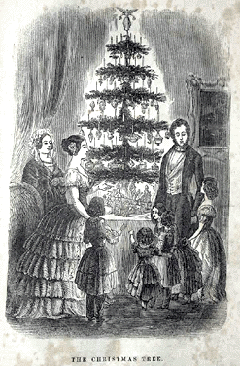
The
Queen's Christmas tree at
Windsor Castle 1848. Republished in
Godey's Lady's Book, Philadelphia, December 1850. Victoria's crown, and Prince Albert moustache edited.
In Britain, the Christmas tree was introduced in the time of the personal union with Hanover, by George III's Queen Charlotte of Mecklenburg-Strelitz in early 1800's, but the custom hadn't yet spread much beyond the royal family. After Victoria's marriage to her German cousin, Prince Albert, by 1841 the custom became more widespread throughout Britain.[37] A powerful image of the British Royal family with their Christmas tree at Windsor Castle, initially published in the Illustrated London News December 1848, was copied in the United States at Christmas 1850, in Godey's Lady's Book (illustration, right). Godey's copied it exactly, except removed the Queens crown, and Prince Alberts moustache, to remake the engraving into an American scene.[38] The republished Godey's image in 1850, the first widely circulated picture of a decorated evergreen Christmas tree in America, the Art historian Karal Ann Marling called Prince Albert and Queen Victoria shorn of their royal trappings; "the first influential American Christmas tree".[39] The book containing the image of the family surrounding a decorated tree, folk-culture historian Alfred Lewis Shoemaker states; "In all of America there was no more important medium in spreading the Christmas tree in the decade 1850-60 than Godey's Lady's Book". The image was reprinted in 1860, and by the 1870s, putting up a Christmas tree had become common in America.[38] In America, interest in Christmas was revived in the 1820s by several short stories by Washington Irving which appear in his The Sketch Book of Geoffrey Crayon and "Old Christmas", for which he used the tract Vindication of Christmas (1652) of old English Christmas traditions, he had transcribed into his journal as a format for his stories.[28] In 1822, Clement Clarke Moore wrote the poem A Visit From St. Nicholas (popularly known by its first line: Twas the Night Before Christmas).[40] Irving's stories depicted harmonious warm-hearted holiday traditions he claimed to have observed in England. Although some argue that Irving invented the traditions he describes, they were widely imitated by his American readers. The poem A Visit from Saint Nicholas popularized the tradition of exchanging gifts and seasonal Christmas shopping began to assume economic importance.[41] In reaction, this also started the cultural conflict of the holiday's spiritualism and its commercialism that some see as corrupting the holiday. In her 1850 book "The First Christmas in New England", Harriet Beecher Stowe includes a character who complains that the true meaning of Christmas was lost in a shopping spree.[42] Christmas was declared a United States Federal holiday in 1870, signed into law by President Ulysses S. Grant.
Nativity of Jesus
The Nativity of Jesus refers to the Christian belief that the Messiah was born to the Virgin Mary. The story of Christmas is based on the biblical accounts given in the Gospel of Matthew, namely Matthew 1:18-Matthew 2:12 and the Gospel of Luke, specifically Luke 1:26-Luke 2:40. According to these accounts, Jesus was born to Mary, assisted by her husband Joseph, in the city of Bethlehem. According to popular tradition, the birth took place in a stable, surrounded by farm animals, though neither the stable nor the animals are mentioned in the Biblical accounts. However, a manger is mentioned in Luke 2:7 where it states "She wrapped him in cloths and placed him in a manger, because there was no room for them in the inn." Early iconographic representations of the nativity placed the stable and manger within a cave (located, according to tradition, under the Church of the Nativity in Bethlehem). Shepherds from the fields surrounding Bethlehem were told of the birth by an angel, and were the first to see the child.[43] Many Christians believe that the birth of Jesus fulfilled prophecies from the Old Testament.[44]
Remembering is a central way that Christians celebrate Christmas. There is a very long tradition of the Nativity of Jesus in art. The Eastern Orthodox Church practices the Nativity Fast in anticipation of the birth of Jesus, while much of the Western Church celebrates Advent. In some Christian denominations, children perform plays re-telling the events of the Nativity, or sing carols that reference the event. Some Christians also display a small re-creation of the Nativity, known as a Nativity scene or crib, in their homes, using figurines to portray the key characters of the event. Live Nativity scenes and tableaux vivants are also performed, using actors and live animals to portray the event with more realism.[45]
Nativity scenes traditionally include the Three Wise Men, Balthazar, Melchior, and Caspar, and who are said to have followed a star, known as the Star of Bethlehem, and arrive at his birth. [46] However, this conflicts with Biblical accounts in that their names and number are never mentioned nor is their arrival at his birth. (Matt. 2:7–8, 16). Likewise, the Bible makes no mention of farm animals, though their presence might be inferred because Mary laid her baby in a manger.
In the U.S., Christmas decorations at public buildings once commonly included Nativity scenes. This practice has led to many lawsuits, as groups such as the American Civil Liberties Union believe it amounts to the government endorsing a religion, which is prohibited by the United States Constitution. In 1984, the U.S. Supreme Court ruled in Lynch vs. Donnelly that a Christmas display (which included a Nativity scene) owned and displayed by the city of Pawtucket, Rhode Island did not violate the First Amendment.[47]
Santa Claus and other bringers of gifts
Main article:
Santa Claus 
Santa Claus is known for giving good little children gift
Originating from Western culture, where the holiday is characterized by the exchange of gifts among friends and family members, some of the gifts are attributed to a character called Father Christmas (also known as Santa Claus, Saint Nicholas or St. Nikolaus, Sinterklaas, Kris Kringle, Père Noël, Joulupukki, Babbo Natale, Weihnachtsmann, Saint Basil and Father Frost).
The popular image of Santa Claus was created by the German-American cartoonist Thomas Nast (1840–1902), who drew a new image annually, beginning in 1863. By the 1880s, Nast's Santa had evolved into the form we now recognize. The image was standardized by advertisers in the 1920s.[48]
Father Christmas, a jolly well nourished bearded man who typified the spirit of good cheer at Christmas, predates the Santa Claus character, was first recorded in early 17th century England, but was associated with holiday merrymaking and drunkenness.[49] In Victorian Britain, his image was remade to match that of Santa. The French Père Noël evolved along similar lines, eventually adopting the Santa image. In Italy, Babbo Natale acts as Santa Claus, while La Befana is the bringer of gifts and arrives on the eve of the Epiphany. It is said that La Befana set out to bring the baby Jesus gifts, but got lost along the way. Now, she brings gifts to all children. In some cultures Santa Claus is accompanied by Knecht Ruprecht, or Black Peter. In other versions, elves make the toys. His wife is referred to as Mrs. Claus.
It is often claimed that the basis for the North American figure of Santa Claus is the Dutch holyman and bringer of gifts Sinterklaas. During the American Revolutionary War, the inhabitants of New York City, a former Dutch colonial town (New Amsterdam) which had been swapped by the Dutch for other territories, reinvented their Sinterklaas tradition, as Saint Nicholas was a symbol of the city's non-English past.[50] The name Santa Claus supposedly is derived from older Dutch Sinte Klaas. In 1809, the New-York Historical Society convened and retroactively named Sancte Claus the patron saint of Nieuw Amsterdam, the Dutch name for New York City.[51] However, the Saint Nicholas Society was not founded until 1835, almost half a century after the end of the American War of Independence.[52] Moreover, a study of the "children's books, periodicals and journals" of New Amsterdam by Charles Jones revealed no references to Saint Nicholas or Sinterklaas.[53] However, not all scholars agree with Jones's findings, which he reiterated in a booklength study in 1978;[54] Howard G. Hageman, of New Brunswick Theological Seminary, maintains that the tradition of celebrating Sinterklaas in New York was alive and well from the early settlement of the Hudson Valley on.[55]
The current tradition in several Latin American countries (such as Venezuela and Colombia) holds that while Santa makes the toys, he then gives them to the Baby Jesus, who is the one who actually delivers them to the children's homes. This story is meant to be a reconciliation between traditional religious beliefs and modern day globalization, most notably the iconography of Santa Claus imported from the United States.
In Alto Adige/Südtirol (Italy), Austria, Czech Republic, Southern Germany, Hungary, Liechtenstein, Slovakia and Switzerland, the Christkind (Ježíšek in Czech, Jézuska in Hungarian and Ježiško in Slovak) brings the presents. The German St. Nikolaus is not identical with the Weihnachtsman (who is the German version of Santa Claus). St. Nikolaus wears a bishop's dress and still brings small gifts (usually candies, nuts and fruits) on December 6 and is accompanied by Knecht Ruprecht. Although many parents around the world routinely teach their children about Santa Claus and other gift bringers, some have come to reject this practice, considering it deceptive.[56]
Decorations
In many countries there are many different types of decorations used depending on the traditions and available resources.

The
Rockefeller Center Christmas Tree in New York City is one of the most famous Christmas Trees in the world.

A Christmas tree ornament.
The Christmas tree is often explained as a Christianisation of pagan tradition and ritual surrounding the Winter Solstice, which included the use of evergreen boughs, and an adaptation of pagan tree worship.[57] The English language phrase "Christmas tree" is first recorded in 1835[49] and represents an importation from the German language. The modern Christmas tree tradition is believed to have begun in Germany in the 18th century[57] though many argue that Martin Luther began the tradition in the 16th century.[58][59] From Germany the custom was introduced to Britiain, first via Queen Charlotte, wife of George III, and then more successfully by Prince Albert during the reign of Queen Victoria, and by 1841 the Christmas tree had become even more widespread throughout Britain.[60] By the 1870s, putting up a Christmas tree had become common in America.[38] Christmas trees may be decorated with lights and ornaments.
Since the 19th century, the poinsettia, a native plant from Mexico, has been associated with Christmas. Other popular holiday plants include holly, mistletoe, red amaryllis, and Christmas cactus. Along with a Christmas tree, the interior of a home may be decorated with these plants, along with garlands and evergreen foliage.

A house decorated for Christmas
In Australia, North and South America, the British Isles, and to a lesser extent continental Europe, it is traditional to decorate the outside of houses with lights and sometimes with illuminated sleighs, snowmen, and other Christmas figures. Municipalities often sponsor decorations as well. Christmas banners may be hung from street lights and Christmas trees placed in the town square.[61]
In the Western world, rolls of brightly colored paper with secular or religious Christmas motifs are manufactured for the purpose of wrapping gifts. The display of Christmas villages has also become a tradition in many homes during this season. Other traditional decorations include bells, candles, candy canes, stockings, wreaths, and angels.
In many countries a representation of the Nativity Scene is very popular, and people are encouraged to compete and create most original or realistic ones. Within some families, the pieces used to make the representation are considered a valuable family heirloom.
Christmas decorations are traditionally taken down on Twelfth Night, the evening of January 5.
The traditional colours of Christmas are pine green (evergreen), snow white, and heart red.
Christmas cards
Main article:
Christmas cardChristmas cards are usually exchanged during the weeks preceding Christmas Day on December 25 by many people (including non-Christians) in Western society and in Asia. The traditional greeting reads "wishing you a Merry Christmas and a Happy New Year", much like the first commercial Christmas card, produced by Sir Henry Cole in London 1843. There are innumerable variations on this greeting, many cards expressing more religious sentiment, or containing a poem, prayer or Biblical verse; others stay away from religion with an all-inclusive "Season's greetings".
A Christmas card is generally commercially designed and purchased for the occasion. The content of the design might relate directly to the Christmas narrative with depictions of the Nativity of Jesus, or have Christian symbols such as the Star of Bethlehem or a white dove representing both the Holy Spirit and Peace. Many Christmas cards are secular and show Christmas traditions such as Santa Claus, objects associated with Christmas such as candles, holly and baubles, and Christmastime activities such as shopping and partying, or other aspects of the season such as the snow and wildlife of the northern winter. Some secular cards depict nostalgic scenes of the past such as crinolined shoppers in 19th century streetscapes; others are humorous, particularly in depicting the antics of Santa and his retinue.
Christmas stamps
A number of nations have issued commemorative stamps at Christmastime. Postal customers will often use these stamps to mail Christmas cards, and they are popular with philatelists. These stamps are regular postage stamps, unlike Christmas seals, and are valid for postage year-round. They usually go on sale some time between early October and early December, and are printed in considerable quantities.
In 1898 a Canadian stamp was issued to mark the inauguration of the Imperial Penny Postage rate. The stamp features a map of the globe and bears an inscription "XMAS 1898" at the bottom. In 1937, Austria issued two "Christmas greeting stamps" featuring a rose and the signs of the zodiac. In 1939, Brazil issued four semi-postal stamps with designs featuring the three kings and a star of Bethlehem, an angel and child, the Southern Cross and a child, and a mother and child.
The US Postal Service regularly issues both a religious-themed and a secular-themed stamp each year.
Economics of Christmas

A Christmas market in Clifton Mill, Ohio
Christmas is typically the largest annual economic stimulus for many nations. Sales increase dramatically in almost all retail areas and shops introduce new products as people purchase gifts, decorations, and supplies. In the U.S., the "Christmas shopping season" generally begins on Black Friday, the day after Thanksgiving, though many American stores begin selling Christmas items as early as October.[62] In Canada, merchants begin advertising campaigns just before Halloween (October 31), and step up their marketing following Remembrance Day on November 11.
In most areas, Christmas Day is the least active day of the year for business and commerce; almost all retail, commercial and institutional businesses are closed, and almost all industries cease activity (more than any other day of the year). In England and Wales, the Christmas Day (Trading) Act 2004 prevents all large shops from trading on Christmas Day. Scotland is currently planning similar legislation. Film studios release many high-budget movies in the holiday season, including Christmas films, fantasy movies or high-tone dramas with high production values.
An economists analysis calculates that Christmas is a deadweight loss under orthodox microeconomic theory, due to the surge in gift-giving. This loss is calculated as the difference between what the gift giver spent on the item and what the gift receiver would have paid for the item. It is estimated that in 2001 Christmas resulted in a $4 billion deadweight loss in the U.S. alone.[63][64] Because of complicating factors, this analysis is sometimes used to discuss possible flaws in current microeconomic theory. Other deadweight losses include the effects of Christmas on the environment and the fact that material gifts are often perceived as white elephants, imposing cost for upkeep and storage and contributing to clutter.[65]
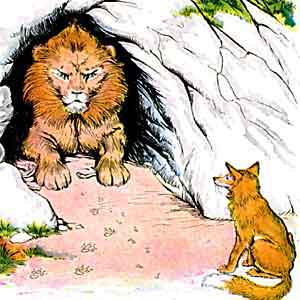






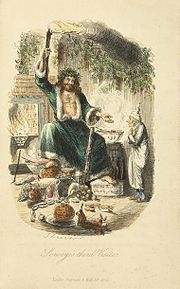

















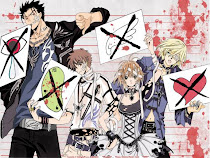






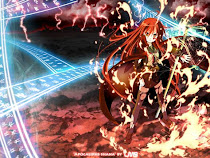











0 komentar:
Posting Komentar